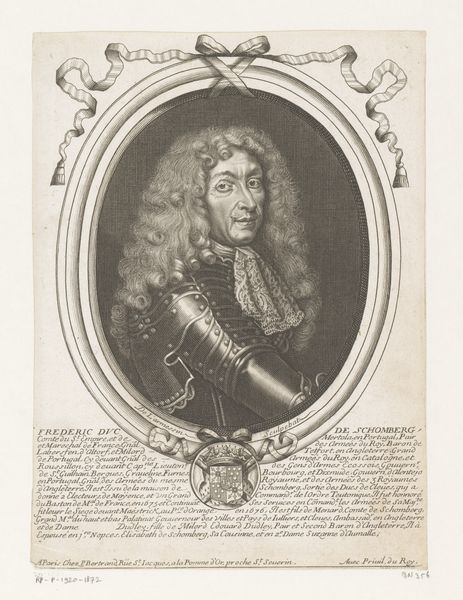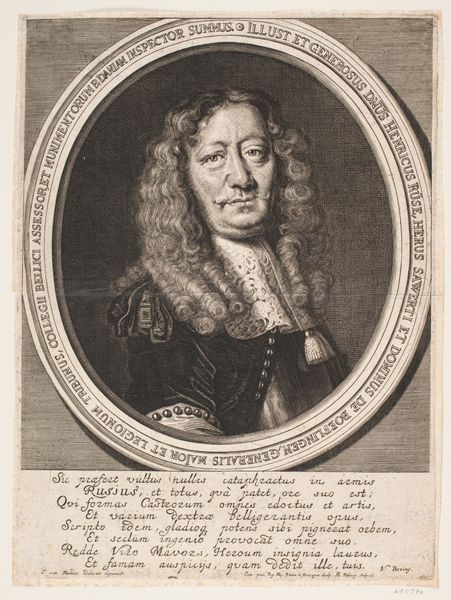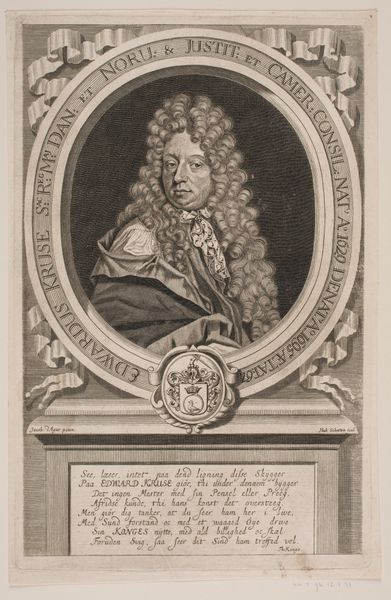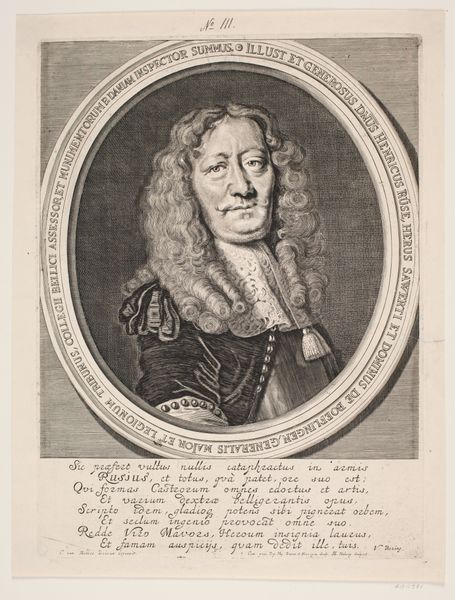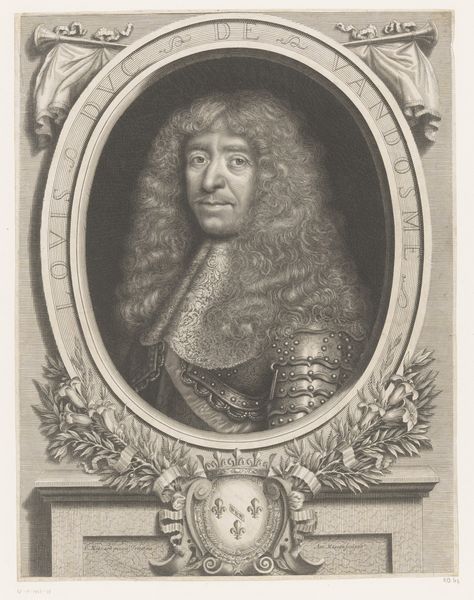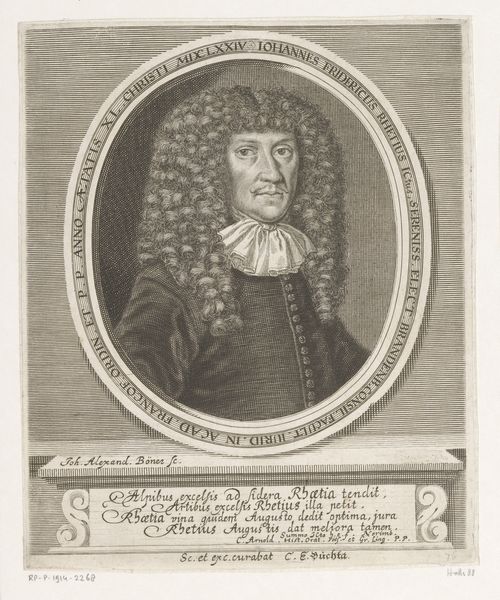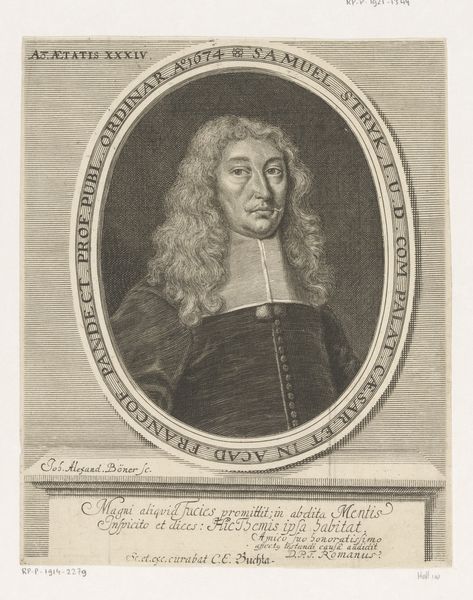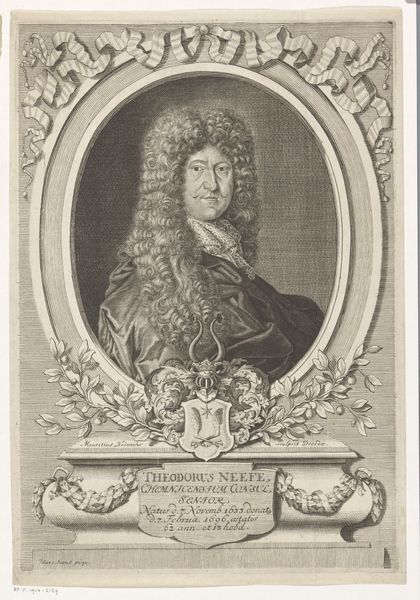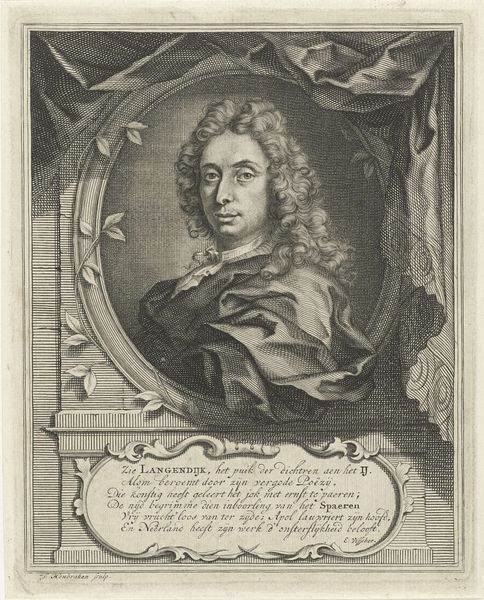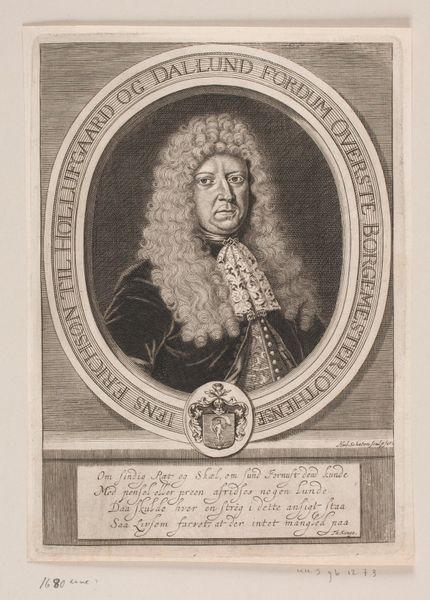
graphic-art, print, engraving
#
portrait
#
graphic-art
#
baroque
# print
#
old engraving style
#
caricature
#
portrait drawing
#
engraving
Dimensions: height 226 mm, width 163 mm
Copyright: Rijks Museum: Open Domain
Curator: This engraving, currently housed at the Rijksmuseum, is a portrait of Charles IV, Duke of Lorraine, made sometime between 1642 and 1694 by Nicolas de Larmessin. Editor: It's an intriguing image. The oval frame gives it a formal feel, yet there's a certain… theatricality in the pose, wouldn't you say? The light seems to focus on his face and that ornate collar. Curator: Absolutely. The Duke's status is proclaimed through very deliberate costuming, specifically, what appears to be an intricately rendered suit of armour beneath a decorative collar. These were obviously potent signifiers of power in the period, reinforcing societal expectations of masculinity and leadership through dress and image. Editor: The contrast between the heavy armour and the delicate lace is striking. Visually, the artist manages to convey a sense of both strength and refinement. Also the intricate detail, typical of baroque, lends the artwork a dynamic tension despite its stillness. I mean, observe how the composition is almost entirely monochromatic but full of layered tones, built purely from line work. Curator: It prompts questions about performance. What narratives around leadership are presented? What elements might contradict these imposed ideals, hinting instead towards vulnerability? I find it equally intriguing that there’s textual narrative inscribed below the portrait in baroque script, which seems to highlight his lineage through his relationships to powerful women. Editor: That's a good point. Without that text, we might solely interpret it as a presentation of male authority, however, this script is a crucial paratext—almost acting as a subtle acknowledgement that female relatives hold immense significance in his social identity. Curator: Indeed. Perhaps this was intended to offset possible concerns over succession by emphasizing the importance of female relatives, particularly in legitimizing rule during this time. Editor: Ultimately, I think the engraving prompts us to look beyond face value at a powerful leader and into the constructed visual languages of power and influence during the Baroque era. Curator: Yes, it serves as a lens through which we can question the very narratives that have shaped our understanding of authority.
Comments
No comments
Be the first to comment and join the conversation on the ultimate creative platform.
